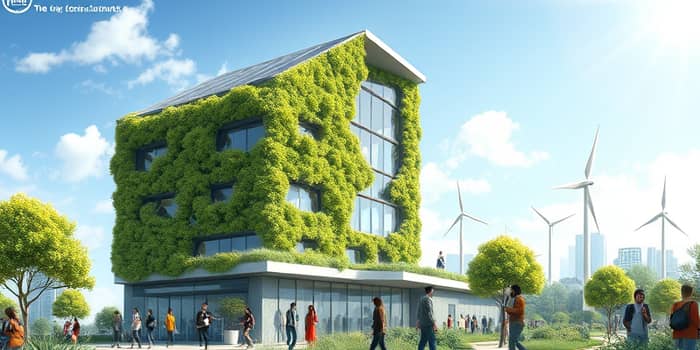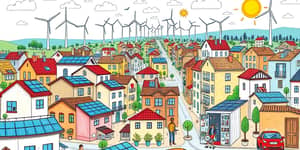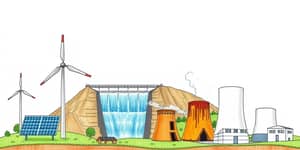In an era defined by environmental challenges and a pressing need for responsible development, one framework has emerged as a global benchmark for sustainable construction: Leadership in Energy and Environmental Design. Commonly known as LEED, this certification represents the world's most widely used green building rating system, offering clear guidelines and rigorous assessment to ensure projects minimize their ecological footprint while maximizing human health and operational efficiency.
Beyond the technical jargon and point tallies lies a narrative of transformation. Each LEED-certified building tells a story of innovation, collaboration, and commitment. From skyscrapers that harness renewable energy to neighborhoods designed around walkability and water conservation, LEED is reshaping how we conceptualize and occupy our built environment.
The Purpose and Impact of LEED Certification
At its core, LEED certification is driven by a singular ambition: to foster cost-saving and environmentally responsible structures that enhance quality of life. Buildings account for nearly 30% of global greenhouse gas emissions, 35% of landfill waste, and can consume up to 70% of a city’s potable water supply. By imposing targets and rewarding performance, LEED encourages designers and operators to think holistically about each project’s ecological legacy.
Projects that pursue LEED certification span a vast spectrum, including:
- Commercial office towers and retail complexes
- Residential developments and multifamily housing
- Neighborhood and community-scale planning
- Interior fit-outs and workspace renovations
- Operations and maintenance upgrades in existing buildings
The outcomes are measurable and profound. LEED-certified facilities consistently demonstrate lower energy bills, reduced water consumption, minimized waste generation, and enhanced occupant comfort. By prioritizing indoor air quality, daylight access, and sustainable materials, these buildings contribute to healthier, more productive environments for their users.
Understanding Certification Levels and Scoring
LEED awards certification based on a point-driven system. Projects earn points by meeting prerequisites and pursuing optional credits within defined categories, each weighted according to potential environmental and human health impacts. Once the points are tallied, the project qualifies for one of four certification levels.
Each credit’s value is determined by its ability to reduce carbon footprints, conserve resources, and improve overall well-being. The scoring model incorporates frameworks from the U.S. EPA’s TRACI impact categories and NIST’s weighting schemes, ensuring a balanced appraisal of energy, water, materials, and indoor environmental quality.
Key Categories and Rating Systems
LEED’s versatility stems from its tailored rating systems, adapted to different project types and scopes. Whether designing a new commercial campus or retrofitting an aging healthcare facility, there is a LEED framework to guide every phase of the building lifecycle.
- Building Design and Construction (BD+C)
- Interior Design and Construction (ID+C)
- Operations and Maintenance (O+M)
- Neighborhood Development (ND)
- Homes
Within these systems, projects compete for credits across major disciplines such as environmental and human health benefits. Core categories include Location & Transportation, Sustainable Site Development, Water Efficiency and Savings, Energy Efficiency, Materials & Resources, and Indoor Environmental Quality. LEED also integrates regional priority credits that address geographically specific challenges, encouraging innovation and local relevance.
The Certification Process Unveiled
Pursuing LEED certification involves a structured journey from initial concept through post-occupancy. Understanding these steps is essential for any team aspiring to achieve recognized sustainability credentials.
- Determine Eligibility and select the appropriate rating system
- Register the project on LEED Online or Arc and pay the registration fee
- Prepare and compile documentation showcasing compliance with prerequisites and chosen credits
- Undergo GBCI’s review process, including preliminary and optional final reviews
- Receive certification decision and pursue recertification for operations-driven projects
Additionally, teams may opt for precertification, a strategic tool to gauge likely performance, attract investors, and demonstrate market readiness. Post-certification, ongoing data sharing—particularly energy and water usage—is often required for up to five years, ensuring sustained accountability.
Benefits and Future Developments
The advantages of LEED-certified buildings extend far beyond the plaques on their lobbies. Owners and occupants alike reap the rewards of reduced operating costs, improved asset value, and enhanced indoor environmental quality. Many jurisdictions now reference LEED prerequisites in their building codes, streamlining approvals and offering incentives for compliance.
As sustainability standards evolve, so does LEED. The advent of LEED v4.1 and the forthcoming v5 emphasize life-cycle performance, operational and embodied carbon, and resilience to climate change. These updates reinforce a holistic approach to sustainability, urging stakeholders to view each project as part of a broader ecological tapestry.
Today, regions like Canada lead in per-capita LEED certifications, setting an example for innovative policies and collaborative frameworks. Globally, the momentum continues to build, as governments, developers, and communities recognize the economic and societal benefits of green building practices.
Ultimately, LEED certification is more than a credential—it is a catalyst for transformation. By adopting these rigorous standards, we can transform the built environment, creating spaces that honor our planet and empower its inhabitants. The path to a sustainable future is complex, but with LEED as a guiding star, architects, engineers, and occupants can join hands to build healthier, wiser communities for generations to come.
References
- https://greenly.earth/en-us/blog/company-guide/leed-certification-meaning-and-requirements
- https://www.rts.com/resources/guides/what-is-leed-certification/
- https://support.usgbc.org/hc/en-us/articles/4404406912403-What-is-LEED-certification
- https://en.wikipedia.org/wiki/LEED
- https://www.rts.com/blog/leed-certification-checklist/
- https://support.usgbc.org/hc/en-us/articles/4404407074323-LEED-certification-process-overview
- https://www.wbdg.org/resources/green-building-standards-and-certification-systems
- https://www.cagbc.org/our-work/certification/leed/










